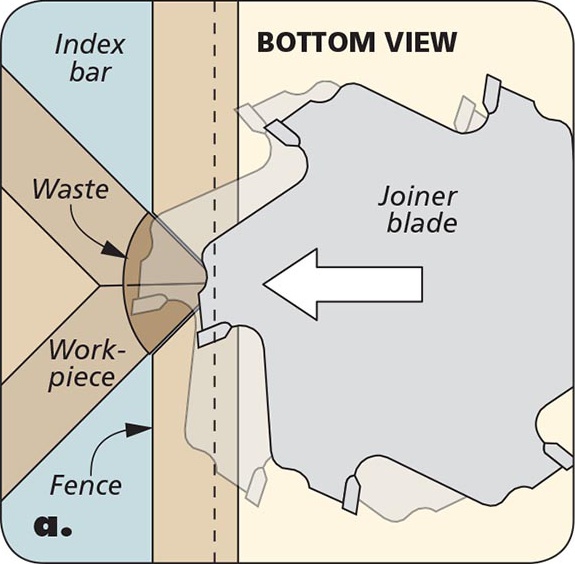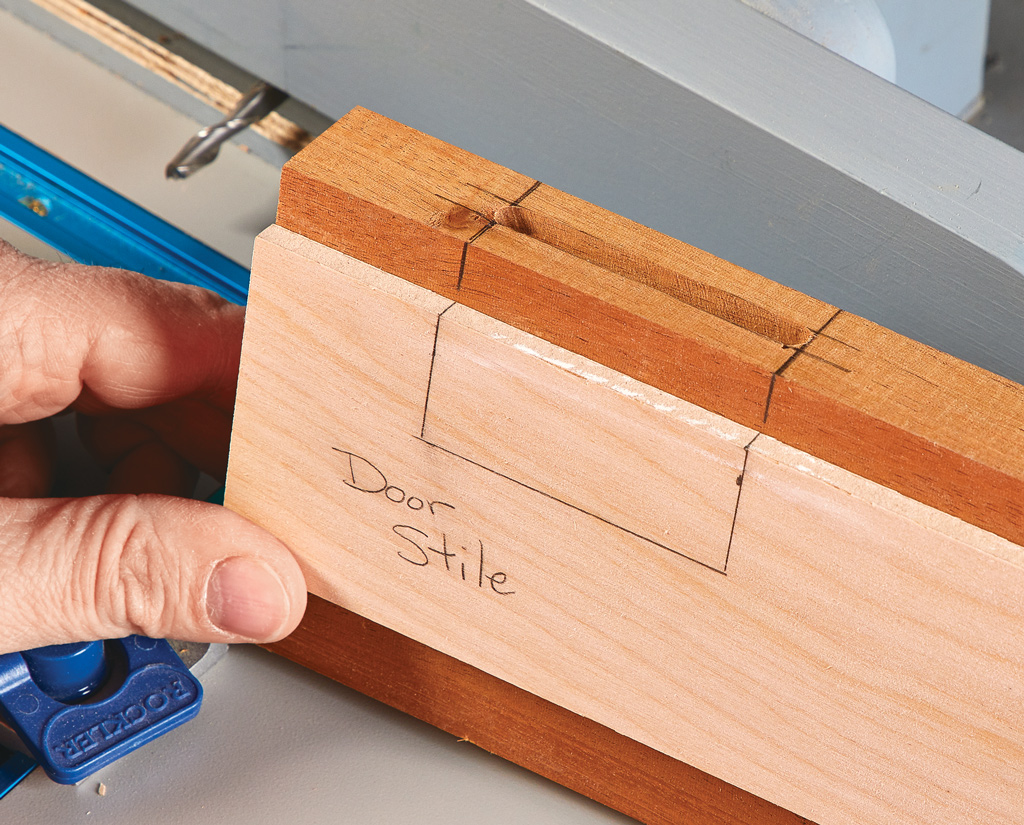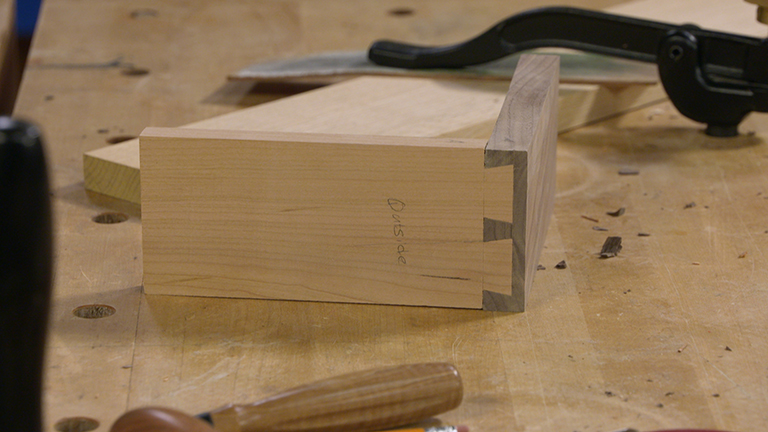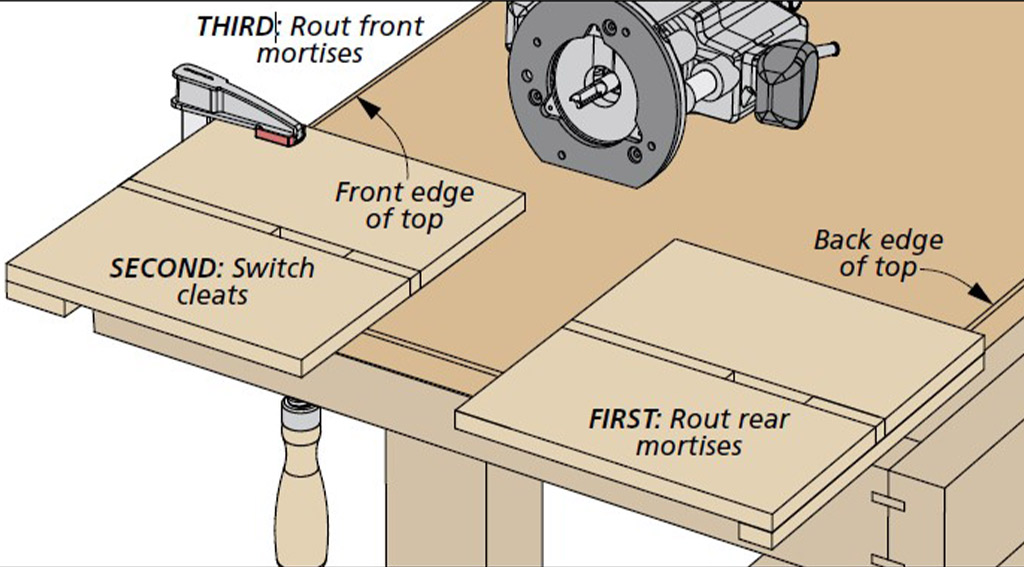I am always looking for new and creative ways to get the most from my woodworking tools. Recently while building several small boxes with decorative splines in the corners, it occurred to me that my biscuit joiner would do an excellent job of making the spline slots. All it needed was this simple-to-build jig that attaches to the fence on the joiner.
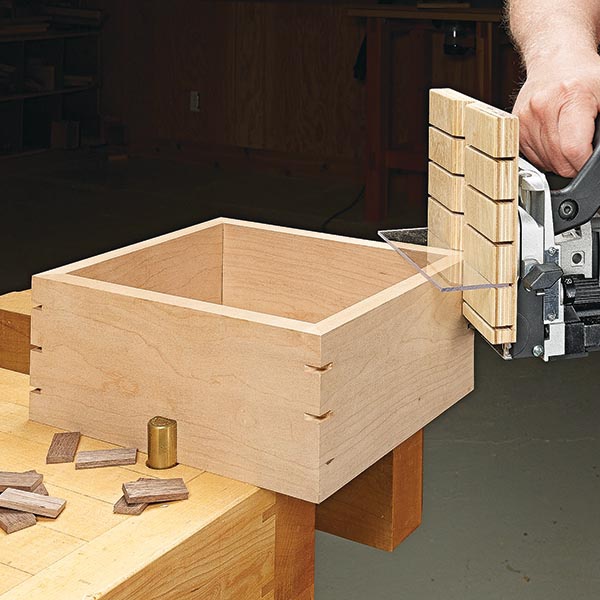
The biscuit joiner jig is easy to make from a piece of plywood. Start by cutting the vertical V-groove centered on the front face of the plywood workpiece. I did this at the table saw with the blade tilted to 45°. A couple of passes completes both sides of the groove. The important thing is that the V-groove opening ends up being 90°. This allows the jig to “wrap around” the corner of the workpiece. Next up is a series of evenly spaced kerfs running horizontally across the face of the jig. These kerfs hold an acrylic (Plexiglas) index bar that determines the location of the spline slots on the workpiece. In the case of my jig, the spline slots are 1" apart. I used 1?8"-thick acrylic so the kerfs can be made with a single pass across the table saw blade. The acrylic index bar should be a snug fit in the kerfs. A vertical pencil line centered down the back face of the jig aids in aligning the jig to the joiner fence.
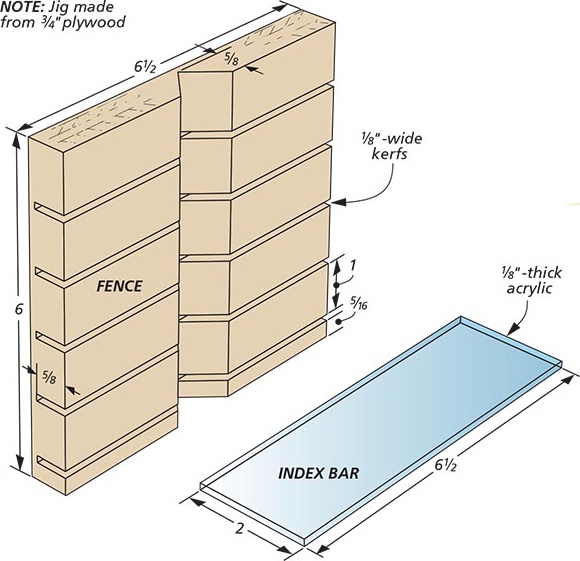
The jig is positioned so the bottom kerf is 3?4" from the top of the joiner blade. This will locate the first spline slot 3?4" down from the top of the box. Attach the jig to the joiner fence with screws.
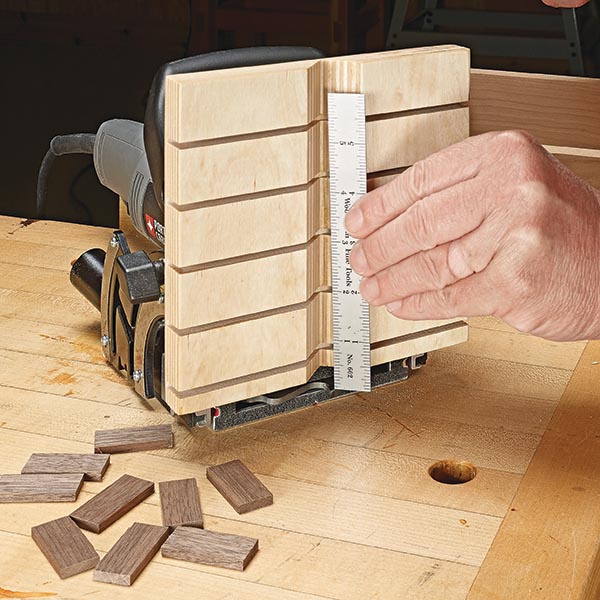
To cut a spline slot, put the acrylic index bar in the appropriate kerf.
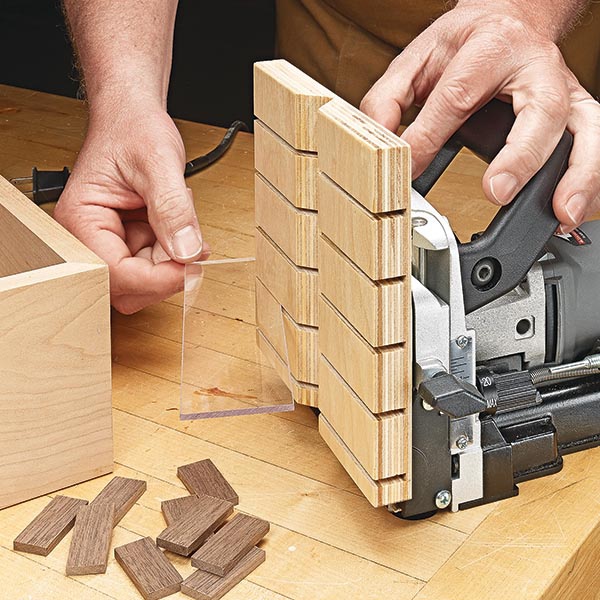
The blade of the biscuit joiner creates the slot for the spline.
